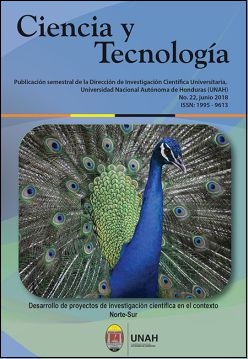Disease associated with Clostridium difficile (EACD) in the University School Hospital and the IHSS. (January to May 2016)
DOI:
https://doi.org/10.5377/rct.v0i22.6440Keywords:
Clostridium difficile, nosocomial diarrhea, diarrhea by antibiotics, toxins A and BAbstract
Clostridium difficile is an anaerobic, spore-producing Gram positive bacterium responsible for the diarrhea associated with the use of antibiotics, in recent years outbreaks have been reported in hospitals worldwide. The disease associated with C. difficile (CDAD) can manifest itself in different ways, among which is an inflammation of the colon that manifests as a diarrheal disease that frequently appears after the use of antimicrobials, especially clindamycin, cephalosporins and fluoroquinolones. During the months of January to May 2016, a descriptive study was carried out in HEU and IHSS hospitals. The general objective of the study was to analyze the microbiological and epidemiological characteristics of the disease associated with Clostridium difficile CDAD in patients with clinical suspicion in the Honduran HEU and IHSS, Tegucigalpa, January-May 2016 of both hospitals. The microbiological analysis consisted in the detection of toxins A and B of the bacteria by means of a serological test of immunochromatography and by isolation by anaerobic culture. The epidemiological analysis was done by collecting information from patients in epidemiological files, previously the informed consent of each patient was obtained. The main results obtained were a point prevalence for the period of 23 7% according to the diagnostic test and the most frequent associated risk factors were advanced age, an average age of the patients of 55 years and 41% of the patients. Confirmed patients were elderly. Likewise, the widespread use of antimicrobials such as clindamycin and cephalosporins in 33% and 60% respectively is manifested as a decisive factor for the development of CDAD. In conclusion, C. difficile is a bacterium found in the main healthcare centers of our country and its association as a causative agent of infections and intrahospital disease is well established. The occurrence of the disease is related to the infrastructure conditions that facilitate its colonization and transmission.
Downloads
1326
Downloads
Published
How to Cite
Issue
Section
License
© Revista Ciencia y Tecnología
Authors who publish in this journal accept the following conditions: In accordance with the legislation of copyright, Revista Ciencia y Tecnología, recognizes and respects the moral right of authors, as well as the ownership of the patrimonial right, which will be ceded to the magazine for its diffusion in open access in printed version and in digital format. By being part of multiple indexers, databases and reference systems, the articles published by Revista Ciencia y Tecnología will be visible and will be downloaded from these websites, indicating, in all cases, the authorship of the articles, the date of publication and the number of the journal to which they correspond.




